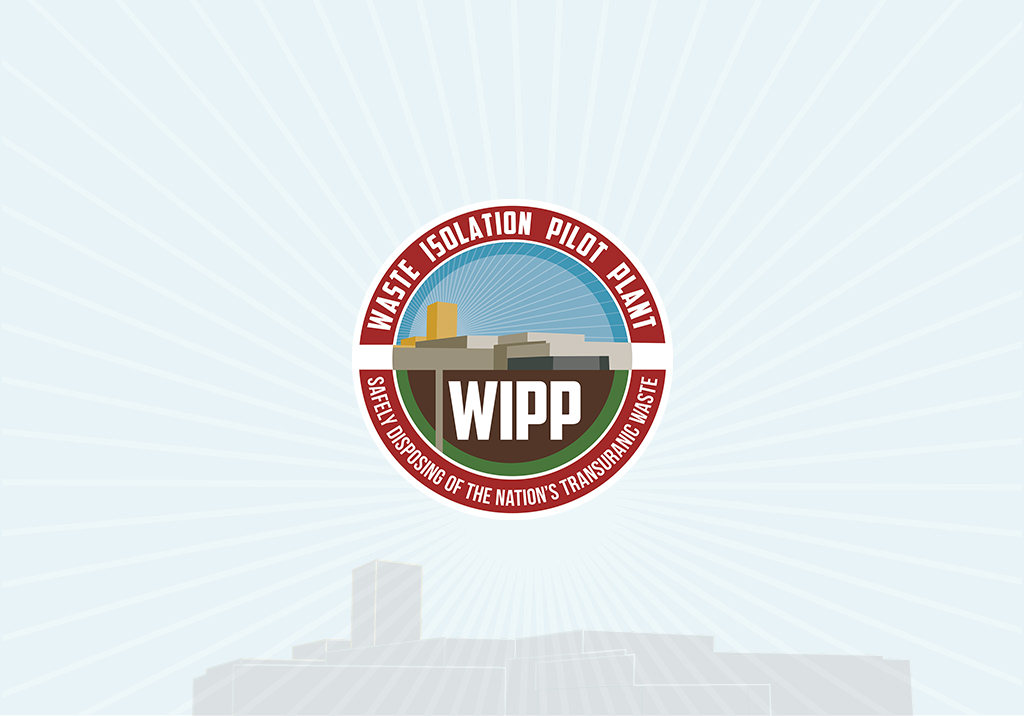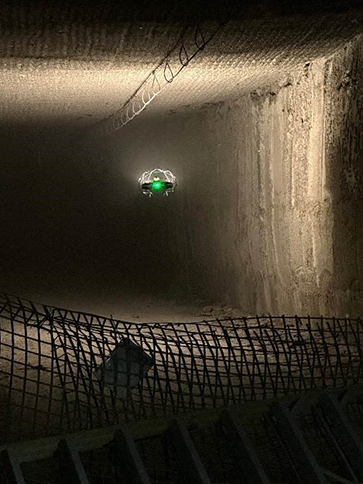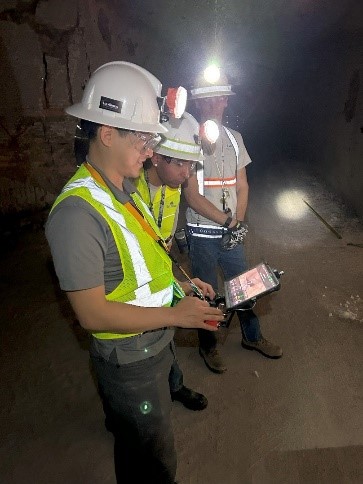
WIPP marks pivotal milestone by completing construction of ventilation system
June 18, 2024
Announcement of Public Meeting
Apriil 2, 2024Underground Aerial Survey Conducted at WIPP
CARLSBAD, N.M., June 5, 2024 – An aerial robotic system or “drone” was launched to serve as a robotic scout in an area over 2,000 feet deep inside the Department of Energy’s Waste Isolation Pilot Plant (WIPP) facility outside of Carlsbad, NM. The drone was deployed to provide the first visual inspection of an underground air exhaust passageway, or drift, that had earlier been closed to personnel.
Sandia and Los Alamos National laboratories collaboratively proposed a unique technology solution to visually inspect and explore the underground area remotely by use of an unmanned aerial system (UAS) with onboard video cameras, light detection, and laser imaging, detection and ranging (LiDAR). Once conditions are analyzed from the UAS, this data will be used to further evaluate the possibility of allowing workers to enter to conduct additional inspections.
“This type of research shows how technology can support how we deliver on our commitment to ensuring a secure and safe environment for all who work in the WIPP underground.” said Mark Bollinger, DOE site manager Carlsbad Field Office (CBFO), which oversees WIPP. “We are optimistic about these studies and feel confident that the information we learn will allow us to make informed decisions moving forward.”
This research was made possible through collaboration between WIPP's management and operating contractor Salado Isolation Mining Contractors, Sandia National Laboratory’s Autonomy & Unmanned Systems Robotics Group, Los Alamos National Laboratory’s Test Coordination Office, DOE-Environmental Management's (EM) Carlsbad Field Office and DOE-EM’s Office of Technology Operations.
“The implications of this type of robotic solution on operations are huge. It demonstrates the capability to keep our operators safe and make difficult tasks easier and safer to perform,” stated Rod Rimando, acting director of EM Office of Technology Operations.
About WIPP:
Located in southeast New Mexico about 26 miles from Carlsbad, WIPP was constructed in the 1980s for disposal of defense-generated transuranic (TRU) waste. The repository is carved out of a 2,000-foot-thick salt bed formed 250 million years ago. TRU waste is disposed of 2,150 feet underground in rooms mined from the salt bed.


